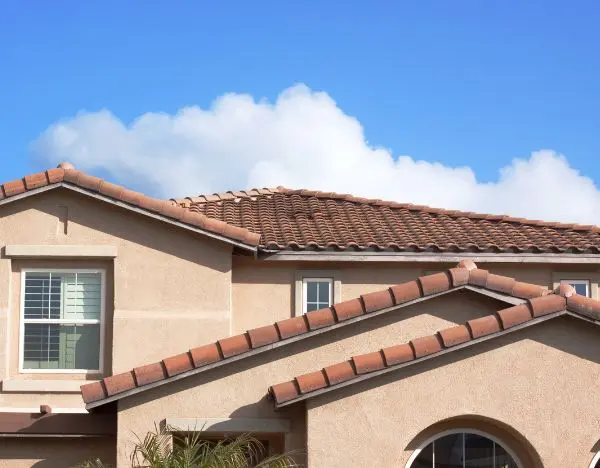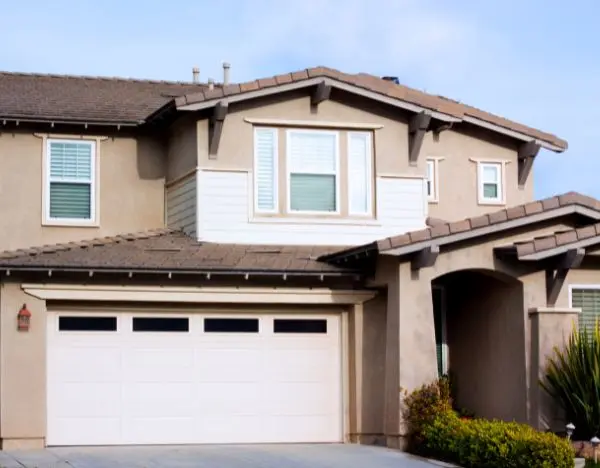Common Construction Defects with Stucco Homes

Stucco, made from cement, lime, and sand, has been a popular choice for exterior home finishing for centuries due to its versatility and aesthetic appeal. However, while stucco homes can be beautiful, they are not without their potential pitfalls. At Wilson Reeder & Zudar, we've seen firsthand how construction defects in stucco homes can lead to significant legal battles for homeowners. Understanding the common defects associated with stucco homes can help you identify potential problems early and seek the appropriate legal remedy.
What is Stucco?
Stucco is a durable and versatile construction material widely used for exterior and interior wall finishes. It's been a popular choice for centuries, known for its aesthetic appeal and protective qualities. Here's a closer look at what stucco is, its components, and its benefits:
Composition
Stucco typically consists of cement, water, sand, and lime. This mixture creates a dense, hard, and durable surface that can be applied in multiple layers over wall surfaces. Modern stucco variants might also include synthetic materials, such as acrylics or fiberglass, to enhance flexibility, strength, and water resistance.
Types of Stucco
- Traditional or Hard Coat Stucco: This is the conventional form of stucco made from the original mixture of cement, lime, sand, and water. It is applied in several layers over a lath base, which can be a wire mesh or a rigid paper-backed wire mesh. The lath helps the stucco adhere properly and adds structural strength.
- Synthetic or Acrylic Stucco: Also known as Exterior Insulation and Finish Systems (EIFS), synthetic stucco includes layers of foam insulation board, a base coat typically reinforced with a mesh, and a finish coat that contains synthetic materials. It provides excellent insulation but requires careful installation to prevent moisture issues.
Where Are Stucco Homes Most Often Built?

Due to their climate and Spanish architectural influences, stucco homes are predominantly found in the Southwestern United States, including Arizona, New Mexico, Texas, and California. They are also common in the Southern U.S., especially in Florida and the Gulf Coast, where stucco's durability and resistance to pests are valued despite the region's humidity. Stucco's popularity in these areas is bolstered by its energy efficiency, aesthetic appeal, and compatibility with local styles and environmental conditions.
What Constitutes a Construction Defect in Stucco Homes?
Construction defects in stucco homes can lead to significant issues, ranging from cosmetic blemishes to structural damages that threaten the integrity and safety of a home. These defects often stem from improper installation, poor-quality materials, or design flaws. Understanding the specific issues that constitute a construction defect in stucco homes is crucial for homeowners, builders, and legal professionals. Here’s an overview of the common construction defects found in stucco homes:
1. Improper Installation
Improper installation is one of the most significant causes of stucco defects. This can include failing to apply stucco in the correct thickness, not allowing layers to cure properly, or inadequate preparation of the underlying surface. Improper installation can lead to several problems, including:
- Cracking: Due to improper curing or application, stucco may develop cracks, which can be aesthetic issues or signs of deeper structural problems.
- Delamination: Where the stucco separates from its underlying surface, compromising the integrity and waterproofing of the wall.
2. Water Intrusion and Damage
Stucco is designed to be a protective exterior layer, but it must be correctly installed with proper water management systems to prevent water intrusion. Defects can lead to:
- Moisture Penetration: If the stucco does not have a proper moisture barrier or if the barrier is damaged, water can seep behind the stucco, leading to rot, mold, and structural damage.
- Efflorescence: The migration of salts to the surface of stucco, leaving a white residue, can indicate moisture issues within the wall system.
3. Inadequate Flashing and Sealing
Flashing and sealing around windows, doors, and other penetrations are critical to preventing water entry. Improperly installed or missing flashing can allow water to enter behind the stucco, damaging the walls.
4. Substandard Materials
Using low-quality or inappropriate materials for stucco application can result in premature deterioration. This includes subpar stucco mix, incorrect type of sand, or inadequate reinforcing mesh.
5. Design Flaws
A building’s design should consider stucco’s characteristics, including its need for expansion joints and proper drainage paths. Design flaws can result in aesthetic and structural issues with stucco finishes.
5 Warning Signs of Stucco Problems and What They Mean
While durable and attractive, Stucco can develop problems over time, especially if not properly installed or maintained. Recognizing early warning signs of stucco issues can save homeowners significant repair costs and headaches. Here are five warning signs of stucco problems and what they might indicate:
1. Cracking
- What It Looks Like: Hairline cracks, spiderweb patterns, or larger, more pronounced cracks in the stucco surface.
- What It Means: Small hairline cracks might be cosmetic, a natural result of the stucco settling. Larger cracks, especially around windows and doors, could indicate structural movement or improper stucco application. If not addressed, these can lead to water intrusion.
2. Staining
- What It Looks Like: Water stains or streaks appearing on the stucco surface, often darker in color.
- What It Means: Staining can be a sign of water retention within or behind the stucco, possibly due to improper drainage or flashing issues. Persistent moisture can lead to more severe problems like mold growth or structural damage.
3. Bulging or Buckling
- What It Looks Like: Sections of stucco that appear to bulge out or separate from the underlying wall.
- What It Means: This can indicate that water has infiltrated behind the stucco, causing the lath (the supportive mesh or framework) to rust and expand or the wall material to swell. It's a serious concern that often requires removing the affected stucco to repair the underlying damage.
4. Efflorescence
- What It Looks Like: White, powdery substance on the stucco surface.
- What It Means: Efflorescence is caused by water moving through the stucco and dissolving natural salts, which then remain on the surface once the water evaporates. It's a sign of water intrusion and may indicate improper sealing or moisture management.
5. Mold or Mildew Growth
- What It Looks Like: Dark spots or patches on the stucco surface, particularly in areas not directly exposed to sunlight.
- What It Means: Mold or mildew growth on stucco surfaces often indicates excess moisture within or behind the stucco. This could result from internal leaks, high humidity, or inadequate water drainage from the stucco system.
Taking Action
If you notice any of these warning signs, taking action promptly is important. Small issues can quickly become major problems if water intrusion leads to structural damage or mold growth inside the walls. Consulting with a professional specializing in stucco repair or a structural engineer can provide insight into the severity of the problem and recommend the best course of action for repairs or mitigation. Regular maintenance and timely repairs are key to preserving the integrity and appearance of stucco homes.
What To Do If Your Home Stucco Construction is Defective
Discovering that your home's stucco construction is defective can be worrying, as it may lead to further damage if not addressed promptly. Here's a step-by-step guide on what to do if you find yourself in this situation:
- Inspect the Damage: Hire a professional to identify all defects in the stucco.
- Document Everything: Take photos and notes of the damage for records.
- Contact the Builder/Contractor: If under warranty, notify them for potential repairs.
- Review Insurance Policy: Check if your insurance covers stucco damage.
- Consult a Lawyer: For unresolved issues, consider legal advice from a construction defect attorney.
- Get Repair Estimates: Obtain multiple estimates from experienced contractors.
- Plan Repairs: Prioritize and schedule repairs based on severity and risk of further damage.
- Prevent Future Issues: Implement regular maintenance and preventive measures.
How a Construction Defect Lawyer Can Help
As a law firm specializing in construction defect litigation, particularly focusing on stucco defects, we are committed to protecting homeowners and ensuring they receive the remediation and compensation they deserve. Here’s how our experienced construction defect lawyers can assist you with stucco defects:
- Thorough Assessment: We work with stucco experts to evaluate the severity of the defect, identify the underlying causes, and document the extent of damage to your property.
- Legal Guidance: Our team provides comprehensive advice on your legal options, helping you understand your rights and the best path forward, whether through negotiation, mediation, or litigation.
- Builder and Contractor Negotiations: We communicate directly with builders, contractors, and their insurance companies on your behalf to seek a resolution without needing court intervention, whenever possible.
- Insurance Claims Assistance: Our lawyers can help navigate the complexities of filing a claim with your homeowner's insurance, ensuring you receive the coverage you're entitled to for the defects and damages.
- Litigation Support: If a fair settlement cannot be reached, we are prepared to represent you in court, presenting a strong case supported by expert testimony and comprehensive evidence of the stucco defects.
- Maximizing Compensation: We aim to secure full compensation for repair costs, diminished property value, and any related expenses incurred due to the stucco defects.
- Future Protection Advice: Beyond seeking immediate remedies, we provide guidance on protecting your home from future stucco issues and ensuring long-term property integrity.
Our goal is to alleviate the stress of dealing with stucco defects by offering expert legal support every step of the way. If you're facing issues with stucco construction, let us help you fight for the quality home you were promised.
Need Help with Stucco Defects? Contact Us Today!
Dealing with stucco defects can be overwhelming, but you don't have to navigate this challenge alone. Our experienced construction defect lawyers are here to provide the support, guidance, and representation you need. Whether it’s evaluating your case, dealing with insurance, or taking legal action, we’re ready to help you secure the compensation and repairs you deserve. Contact us today for a consultation and take the first step towards resolving your stucco defect issues.
